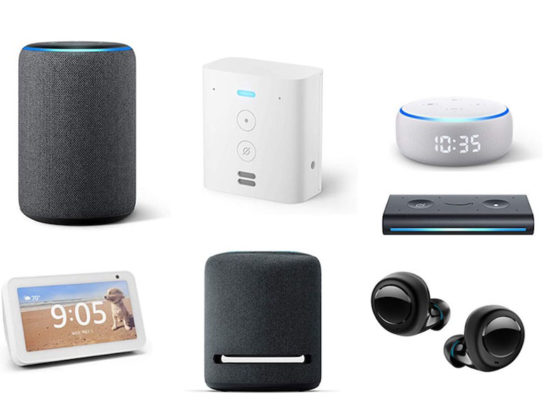At the basic level, data analytics is simply the usage of data to make a better-informed decision. This is something most of us do everyday. We look at the weather report to determine if we should carry an umbrella. We check movie ratings to see if a film is worth watching.
At the business level, access to big data allows companies to analyze their customers or potential customers, as well as track progress for certain campaigns. For example, online blogs track the amount of visitors and time spent on articles. They can also track which articles lead to conversions in the form of sales leads, product purchases, subscriptions, and more.
With the advent of artificial intelligence and easier access to data repositories, the potential of data analytics has grown tremendously and will continue to grow in the near future. In this article, we will give five predictions on what the future of data analytics looks like, areas it will grow, and things that may hinder growth.
- Smart Everything – User Data Farming
In the next 10 to 20 years, user data will become increasingly easier to access. This means that private companies and government organizations will track, store, and use your personal data more aggressively.
An everyday example of this is the monitoring of your internet activity on your PC and mobile devices. Part of Google’s terms and services (that virtually no one ever reads) allows them to track your online activity. One way Google uses this data is by personalizing what advertisements you are shown based on your online shopping history and internet browser history. We accept similar agreements with the apps we download and programs we use. However, most people don’t care or don’t even know that this is happening.
With the Internet of things (IoT) continuously expanding, this farming of our user data will become more and more commonplace. Devices like smartwatches and smart homes will be able to use that data to make our lives more convenient. While this connectivity will make our lives easier, it also means much more of our personal data will be given to organisations like Google who will use it to understand us better and market their products.
As consumers, it is our responsibility to support companies based on whether we agree with their practices. As an example, more and more people who are against Google’s tracking system have chosen to use search engines like DuckDuckGo, which do not track your search history.
However, even if there were a public outcry to enforce laws around data farming, governments have proven to move rather slowly. On the Joe Rogan Podcast, Tech tycoon Elon Musk explained his lack of faith in government legislation to slow down the pace of AI, citing the example that it took around 10 years just to enforce seat belts in automobiles.
It is likely that both AI and data analytics will experience a similar slow pace of government intervention. Data farming will likely ramp up before it slows down.
- Moral Codes of Conduct for Prescriptive Analytics
In the near future, companies will have to create moral codes of conduct for their prescriptive analytics models.
What is Prescriptive Analytics?
Simply, prescriptive analytics is the usage of data forecasts to decide the next course of action. A good example is the usage of predictive models for stock trading. A simple model could trigger the purchase of stocks after certain increments of growth, like if a stock rises for 3 consecutive days. This model could be set to give you an alert with a prediction of how much the stock is expected to grow within the next month, with a list of best courses of action.
Similar models and systems could be created to track a company’s sales, worker output, and more. As better models are developed, it’s likely that more large companies will turn to them to help form business strategies. For example, let’s say you create a prescriptive analytics model to find ways to increase profits by 10% in one year. For argument’s sake, imagine the analysis comes back pointing to a list of options:
Let go of 20% of your HR workforce
Shut down your manufacturing warehouses and move them to a lesser-developed country
Cut your advertising budget by 50% and hire additional sales staff
While these suggestions very well may boost profits by 10%, each would have huge ramifications. More importantly, the suggestions could break ethical codes of conduct. This leads to the question: should we ever make such big business decisions based on data analytics alone?
Back in 2015, Stephen Hawking, Elon Musk, and Bill Gates all made public statements to warn the world about the risks of AI. They all cautioned about developing AI without first learning about how to avoid the associated risks that come with the technology. Likewise, with prescriptive analytics, the creation of strict guidelines must become a standard business practice if not legal legislation.
- There Will be a Rise in Data Analytics Outsourcing
Companies both large and small will begin to outsource data analytics services, which will lead to a rise in data analytics outsourcing companies.
One fairly obvious and certain prediction is that data analytics will become more common, not just within large companies, but small companies as well. The same way search engine marketing (SEM) is now the most important element of marketing & advertising strategy, data analytics will also become just as integral.
However, smaller companies often don’t have the budget to hire data engineers or data scientists to do this work in-house. As a result, just like with SEM, many companies will turn to vendors that outsource data analytics services.
- Public Schools Will Be Slow to Harness Data Analytics Technology
One of the most interesting use cases for data analytics technology is to improve the education system. However, it is likely that public schools will be strongly hesitant to implement data analytics tech into their current workflow and protocols.
The reason is simple: the more red tape something has, the longer it takes to implement any change. There are few institutions with more red tape than the public school systems in many Western countries. On the other hand, private schools will likely be quick to adopt the technology.
Private schools, and private universities especially, have more freedom to operate and innovate as they see fit. Moreover, there are many ways that data analytics could help university students remain on track and lower the drop out rate.
Undergraduate degrees are meant to be completed in four years, but only 50% of students in the United States complete their undergraduate degree within six years and 20.5% drop out within 6 years. While better counseling could lessen the attrition rate, Time magazine reported that the average university in the United States has 1 counselor for every 1,737 students.
A data analytics model could learn from student data, and find patterns in students that have dropped out. These patterns could be missed classes, failed tests, or a decline in overall GPA. The model could then look for those patterns in existing students, and alert counselors with lists of students exhibiting similar issues. Data analytics could help schools prioritize at-risk students, get them the help they need, and prevent them from dropping out.
- J.A.R.V.I.S. in Real Life: Virtual Assistants Will Merge with Data Analytics
Perhaps more precisely, virtual assistants will harness data analytics technology. While not at an Iron Man x J.A.R.V.I.S. scale, merging natural language processing technology with a data analytics model would greatly improve user experience. This would in turn lessen overall time spent analyzing data and creating the next course of action. We are already seeing the early stage of this with Google Analytics.
Google Analytics is a tool used by webmasters to track website data and monitor changes. However, instead of looking at every report, you can simply type in questions or commands like "show me any anomalies this month".
The system will then show you spikes in or drops in important metrics. Simply adding an ASR model to this system could create a user friendly virtual assistant for web data.
…
Above were just five predictions for the future of data analytics. With greater advancements in machine learning technology, we will surely see the data analytics market grow as well.
For more articles, news, and guides on data analytics please see our related resources below and don’t forget to subscribe to our newsletter.




